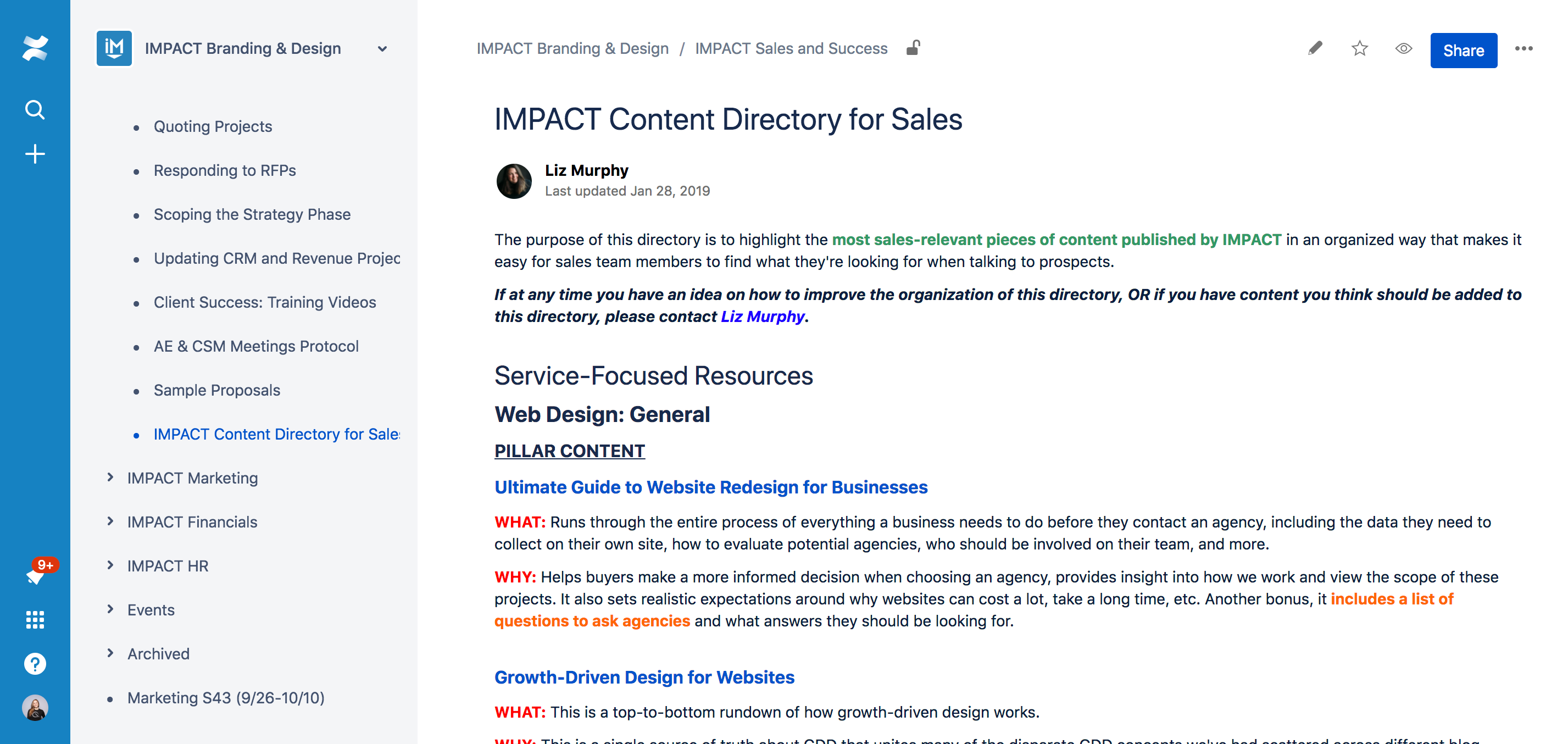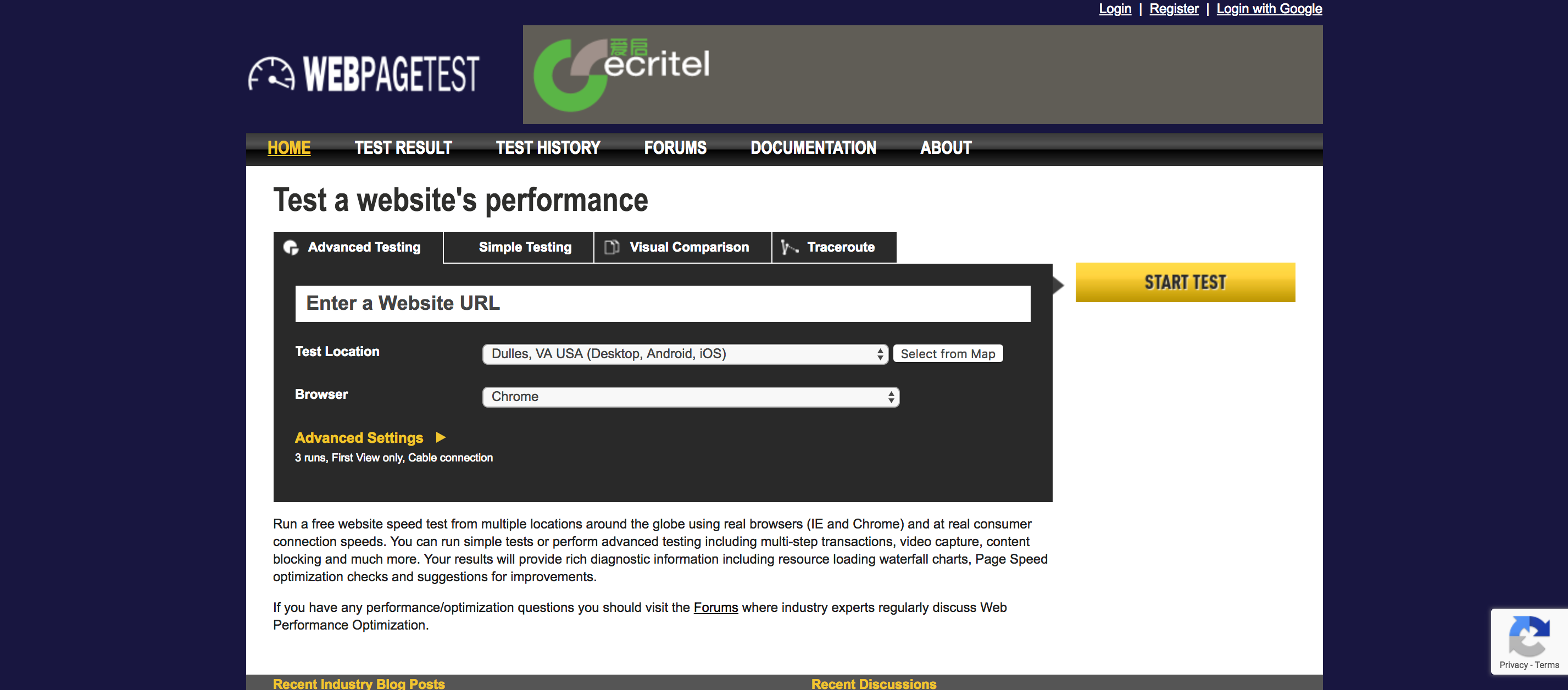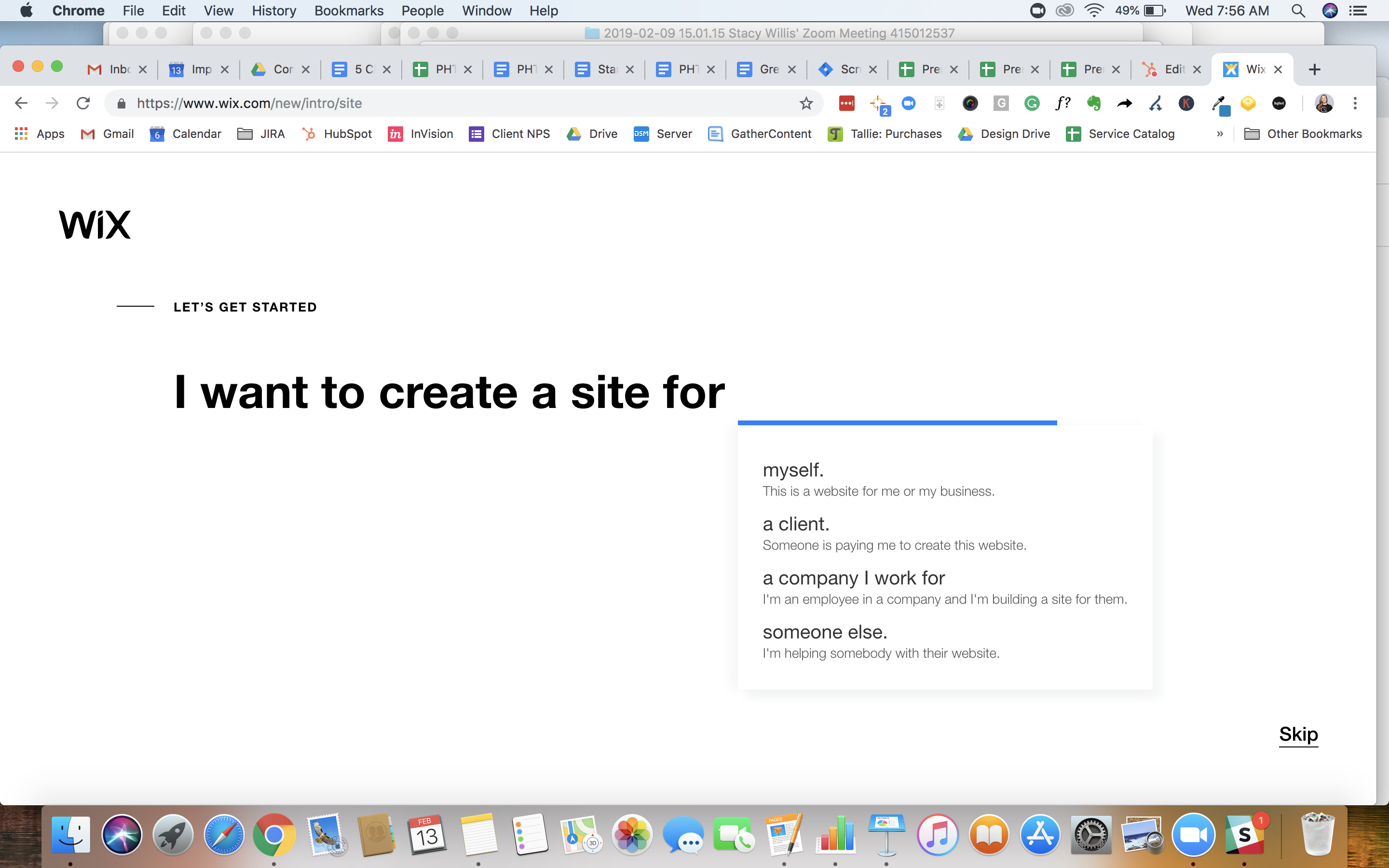Join 40,000+ sales and marketing pros who receive our weekly newsletter.
Get the most relevant, actionable digital sales and marketing insights you need to make smarter decisions faster... all in under five minutes.
It's safe to say that most - if not all - businesses want a website that brings them perfectly packaged, highly qualified inbound leads. That is the most common goal we hear from our clients here at IMPACT, and why so many marketers pour hours of time and thousands of dollars into their websites.
So how do we achieve this goal? I’ll tell you, but first a quick story.
Last year as my son’s second birthday approached, I remember freaking out just a bit about what to do for his birthday party.
I have proudly attended many a toddler birthday party, and I think everyone has seen the ridiculously amazing Pinterest birthday party ideas out there (all the moms out there know what I’m talking about). The over-the-top, no-way-is-it-DIY, must-cost-thousands-of-dollars type of parties have apparently coined a real term called “Pinterest stress.”
Meanwhile, I fail just trying to glue two popsicle sticks together.
So, needless to say, I was stressing just a little bit about what to do for his birthday. Then a realization struck! My son was turning TWO. He could care less about decorations and party themes. His favorite things were sugar, rolling in mud, chasing our chickens, and playing “dinosaur” with his friends.
I stopped everything. I gave myself a virtual slap in the face and reminded myself that his birthday party was for HIM and not for anyone else.
I made a perfect toddler party, and NONE of it was Pinterest-worthy, but my son thought it was the most perfect day in existence. I made banana bread instead of cake, we dug holes in the backyard, the kids held monster truck toy races, and the adults drank mimosas (because let’s face it, some of the party is for the adults 😉).
Ok, so why am I talking about toddler parties?
It’s simple really.
As businesses, we suffer from the exact same problem when it comes to our websites. We have a really hard time getting over our pride and remembering that our websites aren’t for US, they are for OUR CUSTOMERS.
I was spending all of my energy focusing on how I could make everyone else think I was a great mom by throwing a picture-perfect party when I should have simply been focusing on how I could throw the perfect party for my son so HE thought I was a great mom.
⚠️ Advanced Playbook: The Ultimate Website Strategy Guide for Businesses
There is a huge difference between those two goals.
Similarly, the way to build the perfect inbound website that generates the results you want is to stop focusing on your own ego and start thinking about who our website is really for.
There are 6 key drivers that make a great inbound website and will take your marketing results to the next level.
1. Sales Driven
If you've been thinking that your website is a marketing tool, I've got news for you: you're wrong. You need to shift your mindset and think of your website as a sales tool.
Your website is your best salesperson. It is available 24/7, it never asks for a raise, and it is always collecting data on your most qualified customers for you. Really, what else could you ask for from a sales rep?
Now, if you start to think of your website this way, you need to ask yourself one question. Have you really invested everything you should into it?
The best ways to ensure that your website can become a conversion machine are to ensure your sales team views the website as the most valuable resource they have and your website visitors have very easy ways of self identifying as prospects.
To make your website a valuable sales tool, all you have to do is answer the questions that your reps answer in the sales process on the site itself. Then, tell your sales people about it.
Here is an example of the Sales Content Directory that our Editor-in-Chief, Liz Moorehead, keeps updated for our sales team on a weekly basis. It gives them a one-stop shop to search for helpful resources to send to prospects.

If your sales team isn't using your website every day, you have failed to create the perfect inbound website.
2. Customer Driven
There are lots of ways you can make your website more friendly for your customers that you might not be doing right now, but you should be obsessing over how to make your website more customer friendly on a daily basis.
Did you know that 70% of the buying decision is typically made by a consumer before they ever speak to a sales rep or go to purchase a product? This means most of the purchase process is totally out of your direct control.
Nonetheless, there ARE ways to guide that first 70% of the conversation.
The number one reason people choose to buy - from any business - is based on trust. So not only do you have to make sure your prospects trust you before they will buy, but you have to figure out how to build that trust during the 70% of the buying process that happens before you even talk to them.
Whew, that is a lot to ask of your website!
Luckily, there are a few simple rules that you can follow to do just that.
-
Focus on Providing Value: Every page and every word on your website should be there because it provides value to your audience. Your website visitors don’t want a bunch of fluff. Give them real value and educate them in exchange for the time they’ve spent reading the words on your page. Providing value is the first step in building the trust you need oh so badly.
-
Answer their Questions: Answer the REAL questions your audience has. Don’t shy away from the topics that most businesses are afraid to talk about like pricing or your competitors. Really focus on making sure you are thinking like a customer and answer every question you know they will ask you in the sales process. And here’s the most important part: make sure you answer it honestly. You can’t build trust based on lies.
-
Use Video: People don’t buy from businesses, they buy from people. Video is the number one way to build trust with your audience and humanize your brand. In today’s environment, incorporating video on your website is table stakes if you want to see measurable, lasting results. There are 7 types of videos that every website must have: 80% videos, bio videos for your team, product or service videos, landing page videos, customer journey videos, videos about the claims you make as a brand, and a video that details who you are not a good fit for (yes, seriously).
-
Make the Customer the Hero: As one of my favorite country songs so aptly reminds us, our website visitors want us to talk about them, not ourselves. Use “you” statements in your content rather than “us” or “we” statements as often as possible. Customers want to see themselves in your website, not you.
3. Search Driven
The next group you need to be really chummy with are search engines. They are the ones who bring the customers to your website. Luckily it is really easy to be friends with them because they have the same goal as you: providing value to your customer.
To get Google and the other search engines to send lots and lots of visitors to your website, focus on providing value. (Good thing we already covered all that up in the previous section.)
With that taken care of, there are some ways that you can now structure the value you provide in order to help Google more easily understand who they should be sending your way.
You are already doing a great job of writing valuable, educational content for your audience, right? Now all you have to do is make sure you are using the right keywords and organizing your content into clusters, grouped by topic area, to help Google understand where your expertise lies.
🔎 Advanced Playbook: How to Do Keyword Research (+ Free Template)
Some of the other factors that Google looks at in order to determine how much value your website is providing are:
-
User Engagement: Google looks really closely at how your current visitors are interacting with your website as a strong indicator of how happy other visitors they send your way will be. It does this using metrics like Time on Site and Page Depth. The idea is that if people are spending a lot of time on your website and navigating through multiple pages, they are likely finding lots of valuable content and are happy with their experience.
-
Content Freshness: The frequency with which your website is updated is also a big factor in Google’s ranking. The idea here is that newer content is most likely more relevant to potential visitors than older content, and the longer you’ve been regularly producing content, the more likely it is that you are a valuable source of information. Thus, having a good balance of a domain that has been around for a while and plenty of regularly updated, fresh content is the perfect mix.
And, lastly, Google really cares that your users are having a positive experience with your website regardless of what device (mobile, desktop, etc.) they are visiting from. In order to ensure that Google knows your visitors will be happy, there are some Technical SEO basics you should focus on:
-
Website Load Speed: Google cares a lot about how fast your website loads because it knows that users are impatient and will get frustrated by things that take too long. As a result, it is less likely to send traffic your way if your website takes too long to give them information. You can test your website using www.webpagetest.org to see how quickly your site loads. Ideally, it should be under 2 seconds.
![]()
-
Mobile First and Responsive Design: More and more users are visiting websites from mobile devices, so Google has been cracking down hard on websites that have poor mobile user experiences. Make sure your user experience is flawless on any device to steer clear of problems here.
![]()
-
Site Security: SSL certificates are no longer negotiable. Not only do website visitors expect them at this point, Google will seriously ding you for not having one. So just get one, please.
4. Experience Driven
This characteristic goes hand-in-hand with being customer friendly, but it deserves it’s own category because it is so important. Treat users that come to your website like you would customers in a store.
I know when I go to a store with my toddler in tow (maybe to buy birthday party supplies), I want to be able to find what I need as fast as possible, and with as little effort as possible.
Your website visitors want the same thing.
Make it as easy as possible for them to find the thing they want with the least amount of effort on their part.
Make sure the entire experience is built to delight them from start to finish. The design of the website should speak to what they like (again, not what you like). My toddler’s design aesthetic is very different than my grandmother’s. Anything I’d design for them would be wildly different from each other, and wildly different than what I personally like.
To provide the simplest experience and avoid overwhelming your visitors, make sure your website is free of clutter and doesn’t provide them with too many options at any one moment. Create an experience that is familiar to them while finding small, pointed ways to inject uniqueness where it makes sense.
A good goal to keep in mind is to structure your site in a way that requires the user to make the least number of clicks to get to their goal. Then, structure and design your menus and individual pages to that end.
5. Conversion Driven
If you're like most businesses, the end goal of your website is probably to drive revenue. To do that, it has to support a solid conversion rate of anonymous visitors into known contacts.
What is better than having our customers tell us they want to buy instead of us having to try and convince them? Nothing is better. That is the holy grail of website results. So how do we get it?
A self selection tool is the best way to help your website visitors feel like they are getting a customized experience, and it allows them to do all the work for you.
Tools that allow users to customize options, select features that fit their needs, or even do all of the qualification your sales team needs without the help of an actual sales person are the best way to do this. Done right, your customer is happy because they got exactly what they wanted, and your sales team is happy because they don’t have to do any work to close a deal anymore!
If you want to see a great example of what I'm talking about, check out the Wix.com website. It has one of the better self configuration tools we've seen (and it's pretty fun to play with!).
Every page of your website should have a goal to move customers to their logical next step in their journey with you. If you haven't mapped out your next step conversion goal for every page of your website, you are leaving that conversion up to chance.
Another way you can improve your ability to convert is to make it insanely easy for your users to convert. The harder it is for your users to contact you (e.g. the more clicks they have to make to get there) and the longer it takes for you to contact them back, the more leads you will lose.
So take the effort and the waiting out of the equation with great tools like Live Chat and Messenger Bots. This allows your user to get right to speaking with a person the moment they are ready. Now who doesn't love that?
6. Marketer Driven
Ok, we are finally ready to talk about you instead of your customer.
Given everything we’ve already said about how your website is for your customer and not for you, there is one small caveat we have to talk about.
If your website is a hassle to update, maintain or change, how often are you going to do it? Be really honest, now.
❤️ Related: 6 Examples of Perfect Inbound Websites We Love
Probably almost never, right?
So, for your website to do all the great things we talked about above, it should be really easy and user friendly to maintain so that you will actually maintain it.
What do I mean by this? The backend of your website should be intuitive and flexible, allowing for easy page creation, content updates and structure changes. The best way to do this is by building your website on a content management system (CMS).
Some of the most common CMSs that are reasonably priced and allow for the flexibility mentioned above are:
The most beautiful, custom coded website in the world that never gets updated with new content will never provide you the results you want. Instead, find the right place on the spectrum from super custom to super flexible to ensure you will update your website regularly and produce content consistently.
Final Thoughts
Your website is the face your company shows the world. Make sure it represents what your customers want to see, allows them to find what they want quickly and easily, and provides them so much value that they can’t help but trust you.
Do all these things, and I promise, your website will provide you results.
For one day, my son thought I was greatest mom in the world when I threw him the perfect party. Allow your website to give that feeling to your customers and they will keep coming back for more.
Free: Assessment



.png)
